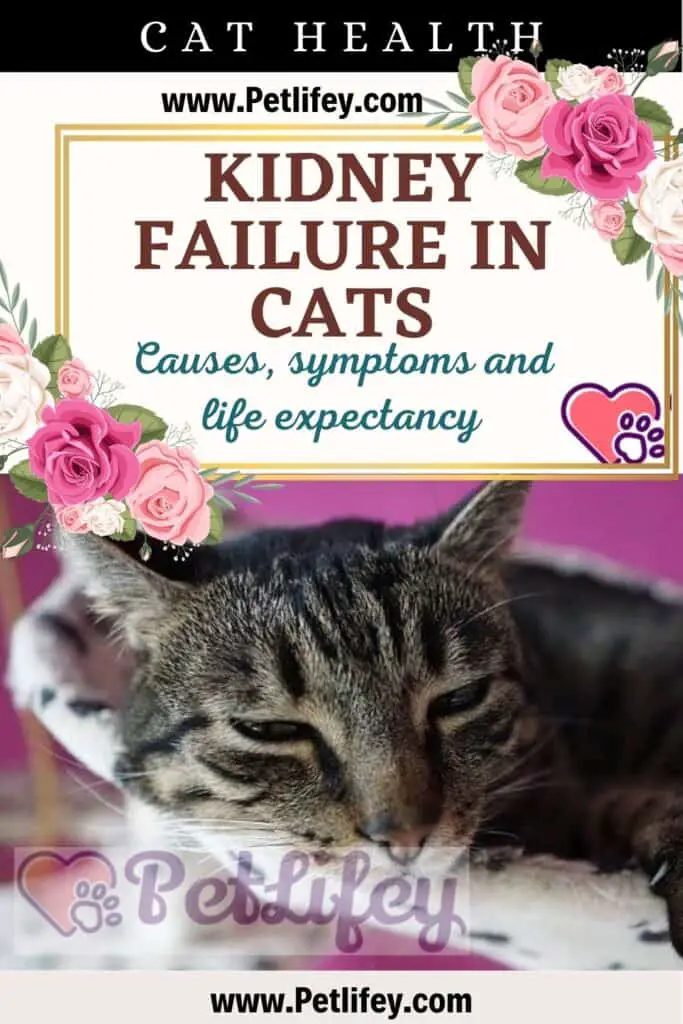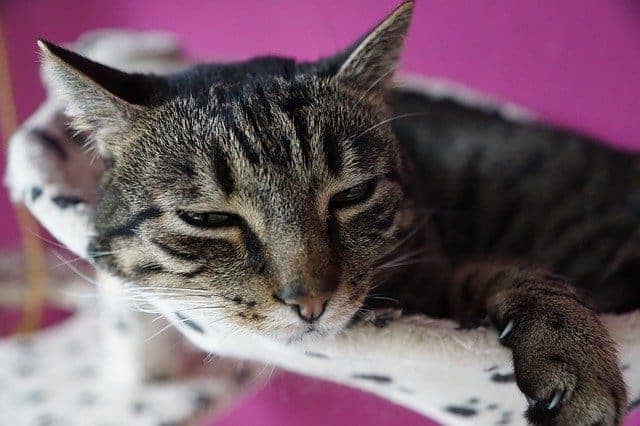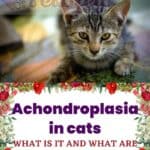
The renal failure in cats or chronic renal failure is one of the most common pathologies in elderly cats. Normally, this dysfunction evolves gradually as the symptoms of the disease worsen.
The speed at which kidney failure progresses in a cat will depend on each specimen and varies remarkably from one animal to another. Its early detection is very important. Good care and proper treatment can ensure that the feline enjoys an improvement in its quality of life. It can even slow down the progress of evil, which can extend the life expectancy of the pet.
Causes of Kidney Failure in Cats
Chronic kidney failure is the consequence of long-term kidney malfunction. This is one of those cat diseases that can be irreversible and prevents these organs from exercising their functions normally, so the affected cat’s body can not filter and eliminate impurities from the blood.
Normally, there is no clear origin of the pathology and in the biopsies performed, only a transformation of the normal tissues into fibrous is found, accompanied by the swelling of the organ.
The truth is that these symptoms are also assimilated to many other ailments such as pancreatitis in cats. However, there is certain evidence that we are facing a case of this kidney condition:
- Polycysts in the kidneys. They affect, above all, exotic breeds. The cysts are replacing the healthy tissue.
- Tumors, such as lymphomas , that lead to severe kidney failure.
- Bladder infections that affect the kidneys.
- Genetic issues , on going inflammation, toxic elements …
If we had to make a more extensive classification of causes of kidney failure in cats, they could be summarized as:
Congenital Causes: Such as Aplasia, Dysplasia and Hypoplasia / Renal Amyloidosis / Feline Polycystic Kidney Disease
Acquired Causes: Idiopathic tubuloinsterstitial nephritis / Pyelonephritis / Glomerulonephritis / Acquired amyloidosis / Nephrotoxins / Hypercalcemia / Renal lymphoma / Feline peritonitis
However, in most cases, it is impossible to find out the main cause of the cat’s kidney failure. Medical actions are carried out based on symptomatic pictures. In the few cases where the cause of failure is determined, treatment is attempted to try to stop the damage from progressing.
Kidney failure can occur in any cat. However, it is more likely to be detected in middle-aged or elderly animals. It is more common the older the cat is. After 8/10 years, the chances that the pet may suffer from this ailment greatly increase.
Symptoms of kidney failure in cats
We are facing a pathology that develops very slowly. However, in some patients, symptoms come on suddenly and without warning. Most of them are due to the accumulation of toxins in the blood.
The most frequent symptomatology is that the cat with kidney failure does not want to eat, with the consequent loss of weight. In addition, afflicted pets often have symptoms of dehydration, lethargy, and depressive behaviours.
If you have a cat with kidney failure, you will notice that it drinks a lot of water. The cause is that it cannot retain fluids, since it is not able to concentrate urine. You may also notice that the coat is deteriorated, vomits, has halitosis and ulcerations appear in the mouth. In general, the animal gives the feeling of being very weak. Over time, all these symptoms get worse
The progression of this disease could be outlined in this way:
- Kidney damage occurs.
- Decreased number and function of nephrons.
- There is a progressive decrease (depends on each cat) in glomerular filtration.
- Increases urea and creatinine and other elements that should have been eliminated by the kidneys.
- Appearance of clinical signs such as polyurea, polydipsia, weight loss, chronic vomiting, less appetite, among the most notable. (the disease may be 70% of its progress, with a large part of the functional nephrons damaged)
- The next stage could be death.
The kidney is necessary for a myriad of bodily functions. This is the reason why kidney failure in cats is accompanied by innumerable complications : low potassium, elevated phosphorus levels, acidosis, high blood pressure, anemia …
However, these symptoms are not defining, as they coincide with those of other diseases. It can only be diagnosed thanks to a complete analysis of blood and urine. Paying special attention to the concentration of urea and creatinine, in addition to checking if the urine is poorly concentrated.
Treatment of kidney failure in felines
If you are fortunate enough to detect the specific cause that is causing kidney failure, treatments will be applied for the specific cause. It would be the case, for example, of a kidney infection.
Unfortunately, in most cats, the trigger for the disease is not usually found out, so the veterinarian can only guide himself through the symptoms .
It is common for the affected pet to initially require intravenous fluid therapy. In this way, the effects of dehydration and problems with the electrolyte level can be alleviated .
When the animal is stabilized, all the resources will be concentrated in pursuing that the renal function is maintained and there are no complications .
The cat will have to be watched and subjected to continuous checks: taking blood pressure and blood and urine tests. In this way, the complications that lurk can be alleviated: anemia, low potassium, high phosphorus, urine infection and high blood pressure.
Kidney failure in cats and life expectancy
Unfortunately, with this disease a cat can appear to be healthy. By the time symptoms appear, 75% of the kidneys may be damaged. From the age of ten, the probability that a cat suffers from kidney failure is 10%. This figure rises to 30% in cats over the age of fifteen.
Life expectancy will depend a lot on the age of the feline and the causes of the disease, as well as the state in which it has been detected. It is important that, from the age of eight, they undergo regular medical examinations, in order to detect abnormalities as soon as possible.
In very old animals, when the disease is detected, it is usually in a very advanced stage, which is why we are already talking about kidney failure in end-stage cats. In any case, if an accurate diagnosis is achieved, the consequences can be alleviated and it is possible to offer them years with a good quality of life.
In any case, we must pay close attention to the diet of these animals suffering from the disease. Generally, a cat with kidney failure does not want to eat. But it must be encouraged to do so.
Diet is vital, in these circumstances. We must be attentive to the amount of water you drink, since the chances of dehydration are very high. Since cats extract most of the liquid from their food, it is best to give them wet food, rather than dry feed.
We must be aware that we are talking about a malfunction of the kidneys, so your food should be low in protein. The reason is simple: most toxins are produced by protein breakdown. So low protein foods will give you less concentration of toxins.
However, you must be cautious when reducing the amount of protein, as this would end up causing the cat to lose a lot of weight. The best thing is to avoid the homemade diet and opt for specific food for cats with kidney failure.
It will also be normal for the veterinarian to advise a diet low in phosphorus or the administration of elements that reduce its absorption.
Alternative Treatments for Kidney Dysfunction in Cats

In addition to the ideal diet, as we have already seen, cats with this disease are at risk of dehydration. It is advisable that water be administered through different pet troughs and even that it be enriched with flavors: chicken, fish … What is necessary to induce the cat to drink enough.
When the risk of dehydration is too high, the cat may require the administration of intravenous serum. This treatment will be done by the veterinarian, although, in cats with very advanced disease, the owner is allowed to be trained so that he can carry this treatment at home.
It is common to also be aware of supplementing the diet with potassium, since the levels tend to drop substantially. It can be administered to the feline orally, in pills or powders that are added to its food ration.
You may also be prescribed some medicine to treat high blood pressure. If not, high blood pressure could lead to blindness, retinal detachment, and even more damage to the kidneys themselves.
Since, in general, the cat with kidney failure does not want to eat, it ends up having a high rate of anaemia; which, in turn, contributes to the animal being more lethargic and weak. It may be that the advice of the veterinarian is to supplement the diet with anabolic, iron and hormones, to stimulate the production of red blood cells.
Unfortunately, in a high percentage of cats with kidney failure, kidney failure is inevitable. However, we must emphasize that the disease progresses according to the cat and with appropriate treatments we can greatly improve the quality of life.
Remember that this article is only informative and any prescribing must always be supervised by a veterinarian, so if you detect that your cat is not well, we will always recommend that you put yourself in his hands as soon as possible. Remember that early detection of kidney failure in cats is vital for their well-being.






